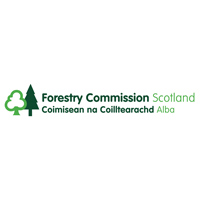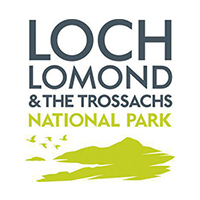In this installment we take a closer look at what the Scotland’s Environment partners are doing to help protect and improve our forests and woodlands, and how you can get involved.
Scotland's environment web
March 30, 2017
Welcome to part two of ‘It’s all about… fabulous forests and wonderful woodlands’.
A word from our partners
Scotland’s forests: great for the environment, great for the economy, great for Scotland
The Forestry Commission Scotland (FCS) is one of the key public bodies responsible for Scotland’s forests and woodlands. At the centre of what they do is promoting sustainable management of trees, woods and forests for the benefit of the Scottish economy, people and environment. They do this through guidance, grants and regulation, and by shaping forestry policy. They are also responsible for managing the National Forest Estate, which covers more than 650,000 hectares.
The Forestry Commission Scotland website has a wealth of information about Scotland’s forests and woodlands and what they do to help protect and improve them, including project news; information on forest policy, grants and regulations; and information to help you plan your own visit. Here are a few suggestions to get you started:
New online tool makes broadleaves management easier
Last month, the Establishment & Management Information System (EMIS), an online tool that helps land managers get the right tree in the right place, was upgraded to include key productive broadleaved species as well as conifers. The move means that forest managers and land owners can now make even better use of this IT-based ‘ready-reckoner’ to optimize their forestry investment. The upgrade, funded by Forestry Commission Scotland, is being carried out by Forest Research. Accessible to all land managers, this upgraded version of EMIS will help resolve many of the restrictions, concerns and fears identified by forest managers in growing productive broadleaved species. More information is available on the Forestry Commission Scotland website.
Forestry and Water Scotland
New guidance designed to help operators raise the bar on how forestry operations are planned, communicated and managed to protect the water environment has just been published. The Know the Rules booklet helps you to keep on the right side of the rules, reduce diffuse pollution risk and improve forestry practice. The Keep the Distance vehicle sticker outlines minimum working distances from watercourses, including connected ditches and drains.
The guidance is part of the Forestry and Water Scotland initiative that brings together new and established resources to help forest managers and practitioners follow good forestry practice to improve water management on their sites. Partners in the initiative are Forestry Commission Scotland, SEPA, Confor, Forestry Contractors Association and the Scottish Government. It is endorsed by the Diffuse Pollution Management Advisory Group (DPMAG), a partnership that focuses on protecting and improving Scotland's water environment by reducing rural diffuse pollution.
Booklets and stickers have been sent out to conservancies and forest districts but if you would like additional copies please email Forestry and Water Scotland. More resources, including the videos demonstrating good water management in Scotland’s forests, can be found at Forestry and Water Scotland.
There’s more to Scotland’s forests than meets the eye
If you’re interested in how we benefit from forests and woodlands, then have a watch of this great Forestry Commission Scotland video – ‘There’s more to Scotland’s forests than meets the eye’ – which offers a good introduction to the topic.
https://www.youtube-nocookie.com/embed/4M8v0k5YdIg
One of the benefits of Scotland’s forests is the timber they provide. You can learn about the different species of trees found in Scotland and their uses, the importance of the forest cycle in a well-managed forest, and what goes on in a working forest on the trees and forestry section of the website.
Woodlands and forests also provide a home for thousands of plants and animals, many of them protected or priority species. Learn about the work Forestry Commission Scotland have done to protect and conserve priority habitats, tackle invasive species, monitor key species and record the historic environment in the Action for the Environment on the National Forest Estate report and on the Conservation and environment section of the website.
Trees, woods and forests can play a key role in helping to promote better physical and mental health by providing greenspace environments where people can be physically active and recover from stress. Forestry Commission Scotland has teamed up with Community Health Care Partnerships and NHS Boards to encourage the use and enjoyment of greenspace by all. Find out more in the Forestry Commission Scotland woods for health strategy and action plan, and on the Woods for health – our health strategy section of the website, where there are some interesting case studies looking at greenspaces in hospitals and how woodland environments can benefit people with early stage dementia.
The Tales from the forest and news blogs are also well worth a read. Latest posts include ‘Sticks at the flicks: trees of the silver screen’, which looks at the role trees play in movies, and ‘Community Champions wanted’, which is all about volunteering and the Community Champions programme.
Multipurpose forests and woodlands
Scotland’s forests and woodlands contribute to our ecosystems and strengthen our economy. To get the most benefits for both the environment and for us, woodlands need to be designed and managed to be multipurpose. This means considering biodiversity, timber production, landscape, water quality and flooding, carbon management, public access, and cultural heritage, and bring them together in a management plan so woodland can achieve its full potential. NatureScot is a strong advocate of this approach and has a wealth of information and planning guidance on their website for forest and land managers.
Forests also have a role to play in the expanding bioenergy industry, with biomass offering a low carbon source of energy that can contribute to the fight against climate change. However, it can also have implications for land use and biodiversity. Find out more in the NatureScot Position Statement on Bioenergy and Natural Heritage.
You can also find out more about Scotland’s forest and woodland habitat, the species it supports, why they are important and how they are being managed; just have a look at the Scotland’s woodlands and the forest and woodlands sections of the website.
Woodland work in the Cairngorms
Cairngorm National Park is home to the largest remaining areas of semi-natural woodland habitats and the most extensive area of boreal forest in Britain. So it’s no surprise that one of the focus areas for conservation within the National Park is to expand, enhance and improve connectivity of woodland. As well as carefully managing the Parks woodlands and forests, the Park Authority is also working with partners on key conservation projects.
Pearls in Peril: Hundreds of trees are being planted along the River Dee, River Spey and River South Esk to help protect salmon and freshwater pearl mussels from the impacts of climate change. As part of the Rivers and Fisheries Trusts of Scotland’s Pearls in Peril project, native broadleaved trees are being planted in the upper catchments of rivers to provide shade and prevent water temperatures increasing to potentially lethal levels for these species.
Restoring ancient woodlands: The National Park is one of two areas in Scotland chosen to be part of the Woodland Trust’s UK Ancient woodland restoration project. The project aims to positively manage plantations on ancient woodland sites to restore remnants of ancient woodland communities and improve biodiversity.
Visit the woodland work section of the Cairngorm National Park website for more information on conservation. And if you’d like to know more about the Cairngorm National Park and how you can get involved in looking after this fabulous environment, take a look at the get involved section.
Loch Lomond Wild Challenge
Woodlands within the Loch Lomond & The Trossachs National Park are one of their most valuable habitats, supporting species of international importance. To help protect and improve them, the Park has recognised woodlands as one of five Wild Challenge projects in their biodiversity action plan, Wild Park 2020.
The Our woodlands habitat network project aims to create the largest single functioning native woodland in the UK by connecting existing woodland corridors within the park. The project will build on existing partnerships that manage forest areas, such as for The Great Trossachs Forest, and work with other land managers to increase habitat connectivity and condition at a landscape scale. You can find out more about the our woodlands habitat wild challenge and the wider Woodlands and Forest Programme in the Wild Park 2020 biodiversity action plan (PDF) and on the Loch Lomond & The Trossachs National Park website.
Forestry regulation & guidance
The Scottish Environment Protection Agency (SEPA) is responsible for ensuring that forest developments are designed to consider, and where possible, benefit the environment. They do this through various types of regulation and by providing guidance and advice to those working in or involved with the forest industry.
There are several key pieces of environmental legislation that apply to forestry activity. These include:
- the Water Environment (Controlled Activities)(Scotland) Regulations, also known as CAR, which require authorisation for activities such as fertiliser and pesticide application, watercourse engineering works, cultivation of land and discharge of surface water run-off.
- The Water Framework Directive and the Water Environment and Water Services (Scotland) Act 2003, which provide the framework for the protection, improvement and sustainable use of the water environment. You can find out more about how these apply to forest industries in the research report Woodland for Water: Woodland measures for meeting Water Framework Directive objectives.
- The Water Environment (Oil Storage)(Scotland) Regulations 2006.
- The Waste (Scotland) Regulations 2011, which outline waste management options and exemptions for forest activities.
You can find more information about these regulations and related guidance and general binding rules (GBRs) on the forestry regulation page of the SEPA website. You can also find guidance in relation to planning and how and when you should consult SEPA on felling and re-planting applications, forest plans, EIA consultations and Rural Priority consultations.
Trees help safeguard freshwater fish
Rising water temperatures and climate change are topics of interest at the moment, but did you know that trees can have a role in the growth, production and survival of freshwater fish?
Next week...
Look out for the latest 'Where's Willie?' post from our resident blogger Willie Towers. In next week's post Willie shares his changing relationship with trees throughout his career as a soil scientist and explores how the role of forests and woodlands has developed over time.
And don’t forget to share your own photos of our fabulous forests and wonderful woodlands. Just tag your photos #ScotEnvironment and we’ll share them on the Scotland’s environment Instagram.
Adobe Acrobat Reader is the free, trusted leader for reliably viewing, annotating and signing PDFs.
Download Adobe Acrobat Reader




